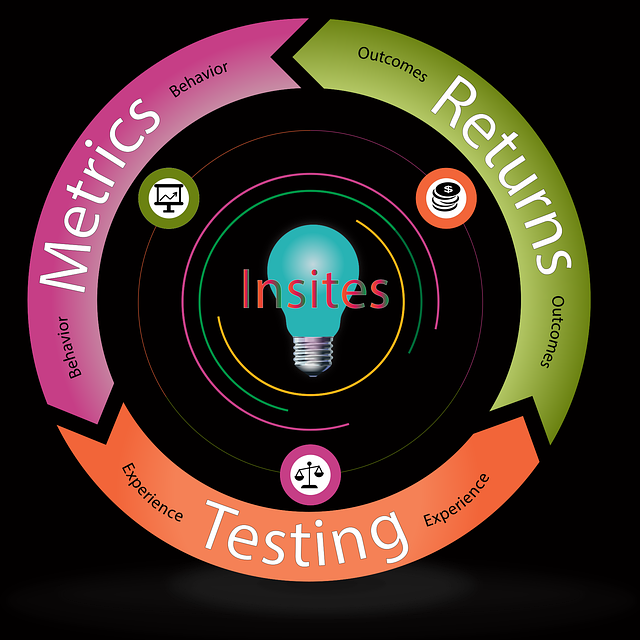White-Hat SEO Techniques are ethical practices for website optimization, focusing on user value and search engine guidelines. Key strategies include creating high-quality content, natural keyword usage, optimizing site structure, and building quality backlinks. These methods enhance trust, engagement, and conversion metrics while reducing bounce rates and penalties. On-page optimization involves refining elements like content, keywords, and structured data to improve user experience. High-quality content attracts users and increases time spent on site, while strategic link building fosters reciprocal relationships and boosts authority. Prioritizing User Experience (UX) ensures accessibility and satisfaction through inclusive design and fast loading times. Measuring success includes KPIs like bounce rate, session duration, and pages per session, aligning with ethical standards and long-term sustainability.
In an increasingly digital landscape, effective online visibility is paramount for businesses. However, achieving success through search engine optimization (SEO) requires a delicate balance between strategy and ethics. This article explores ethical SEO techniques, highlighting the importance of White-Hat SEO Techniques in enhancing online presence without compromising integrity. We delve into key principles, from on-page optimization to user experience, providing a comprehensive guide to successful and sustainable SEO practices.
Understanding White-Hat SEO: The Ethical Approach

White-Hat SEO Techniques refer to the ethical and sustainable methods used to optimize websites for search engines, ensuring long-term visibility and integrity. Unlike Black-Hat SEO, which employs deceptive practices to manipulate rankings, White-Hat techniques focus on providing value to users while adhering to search engine guidelines. These include creating high-quality content that is relevant, engaging, and informative; using keywords naturally and contextually; optimizing site structure for better navigation and user experience; and building quality backlinks through legitimate outreach efforts.
Adopting White-Hat SEO Techniques not only helps search engines like Google rank websites higher but also fosters trust among users and peers. By prioritizing the user’s intent, these ethical practices ensure that a website provides genuine value, leading to increased engagement, lower bounce rates, and improved conversion metrics. Moreover, adhering to ethical standards protects sites from penalties, ensuring their online presence remains robust and respected in the long run.
Key Principles of Ethical and Effective SEO

The foundation of ethical and effective Search Engine Optimization (SEO) lies in adhering to white-hat SEO techniques, which prioritize long-term sustainability and user experience. These key principles are built on trust and transparency, ensuring that search engines like Google reward websites with genuine value and quality content. By focusing on creating valuable content that satisfies user intent, developers and marketers can improve site rankings naturally over time.
White-hat practices include optimizing website structure for better crawlability, implementing keyword research to target relevant terms, enhancing page speed for improved usability, and ensuring mobile responsiveness. These techniques foster a healthy relationship between search engines and websites, leading to increased organic traffic and a loyal user base. Moreover, ethical SEO encourages diversity in link building, focusing on acquiring backlinks from reputable sources rather than engaging in manipulative practices that could harm a site’s reputation.
On-Page Optimization: A Foundation for Integrity

On-Page optimization is a cornerstone of ethical SEO practices, emphasizing integrity and transparency in search engine rankings. It involves refining website elements to enhance user experience and relevance while aligning with search engine guidelines. By focusing on high-quality content, meaningful keyword usage, and structured data, websites can earn their way up the search results without cutting corners or engaging in manipulative tactics.
White-Hat SEO Techniques are at the forefront of this strategy, encouraging creators to produce valuable, informative content that satisfies user queries. This involves conducting thorough keyword research to understand audience intent and implementing these keywords naturally throughout copy, headings, and meta descriptions. Additionally, optimizing image alt tags, URL structures, and internal linking ensures search engines can efficiently crawl and index pages, further bolstering a site’s ethical SEO foundation.
High-Quality Content: Engaging and Search Engine Friendly

High-quality content is a cornerstone of ethical White-Hat SEO techniques. It involves creating engaging, valuable, and unique material that resonates with your target audience while also being optimized for search engines. By focusing on producing in-depth, informative, and visually appealing content, you attract and retain users, thereby reducing bounce rates and increasing time spent on site. Search engines like Google prioritize such content, as it enhances user experience—a key factor in their ranking algorithms.
This approach goes beyond mere keyword stuffing. It involves understanding your audience’s intent behind searches and crafting content that satisfies their queries comprehensively. By integrating relevant keywords naturally throughout your text, you ensure better visibility on search engine results pages (SERPs) without compromising readability or quality. This strategy not only boosts your website’s organic traffic but also fosters trust and credibility among visitors, laying the foundation for a robust online presence.
Link Building Strategies: Natural and Reciprocal Connections

In the realm of White-Hat SEO Techniques, link building is a strategic art that focuses on cultivating natural and reciprocal connections. Instead of employing manipulative tactics, ethical practitioners build links by fostering genuine relationships within the digital landscape. This approach involves collaborations with influential websites in relevant niches, where content value takes center stage. By offering valuable resources, such as insightful articles or unique tools, websites naturally attract backlinks from these esteemed sources.
Reciprocal linking is a cornerstone of this strategy, where two sites mutually benefit from each other’s online presence. When a respected website links to yours, it enhances your site’s authority and visibility. In turn, you can return the favor by highlighting their valuable content or services, creating a web of supportive connections that not only improves search rankings but also fosters trust among online users.
User Experience: Prioritizing Accessibility and Satisfaction

In the realm of Ethical SEO, User Experience (UX) is a cornerstone, and prioritizing accessibility and satisfaction is a key aspect of White-Hat SEO Techniques. Ensuring that your website is accessible to all users, regardless of their abilities or technological limitations, not only enhances inclusivity but also significantly improves search engine rankings. This involves employing strategies such as proper alt text for images, semantic HTML, and simple navigation structures to enable seamless interaction.
A satisfying user experience further solidifies the importance of UX in SEO. By focusing on intuitive design, fast loading times, mobile responsiveness, and valuable content, you create an environment where visitors are more likely to engage, browse, and convert. Such positive interactions signal to search engines that your site is a valuable resource, leading to higher search rankings over time. This holistic approach ensures that your SEO efforts not only adhere to ethical standards but also contribute to the overall well-being of your website’s users.
Measuring Success: Ethical KPIs and Analytics

Measuring success is a vital aspect of any digital marketing strategy, and for Ethical SEO Techniques, it involves more than just ranking on search engines. Instead of relying solely on metrics like keyword rankings or backlink quantity—which are common in Black-Hat SEO practices—White-Hat SEO professionals focus on key performance indicators (KPIs) that reflect genuine user engagement and satisfaction. These include bounce rate, average session duration, and pages per session, which provide insights into how well the website is meeting user needs.
Analytics tools play a crucial role here, offering data-driven perspectives to optimize content and site structure. By analyzing user behavior through these ethical KPIs, marketers can ensure their SEO efforts align with search engine guidelines and deliver genuine value to audiences. This approach fosters long-term sustainability and trust, which are essential for building a robust online presence that resonates with users.
